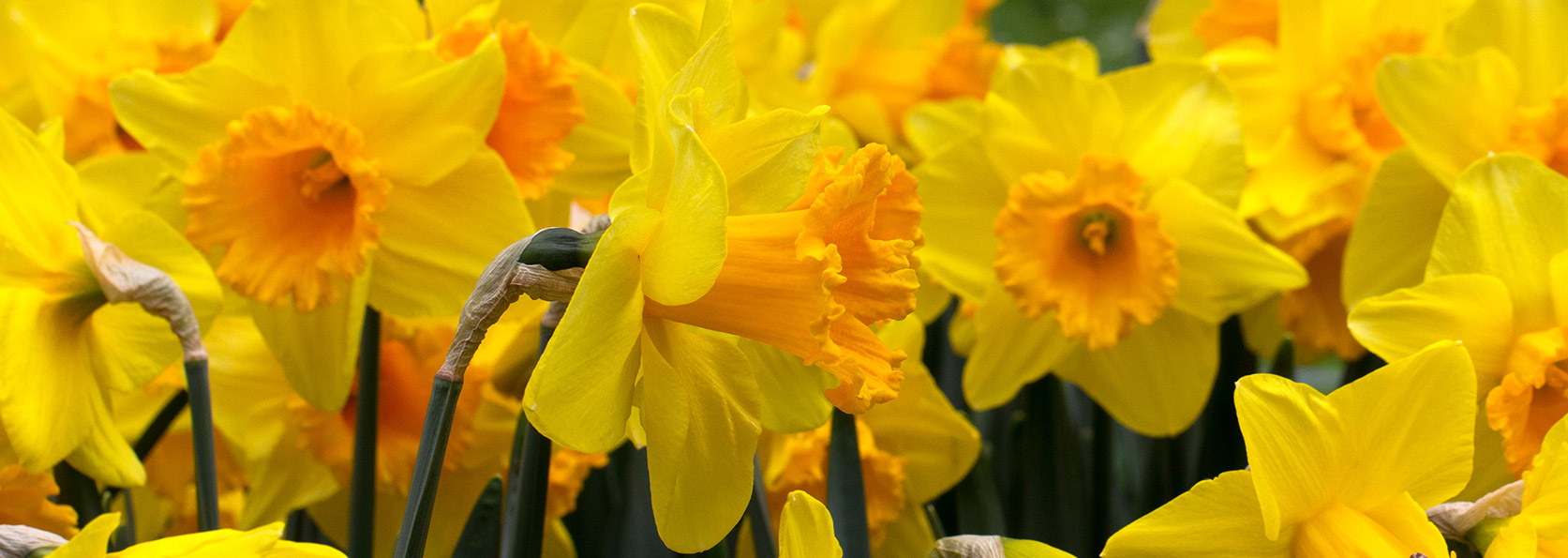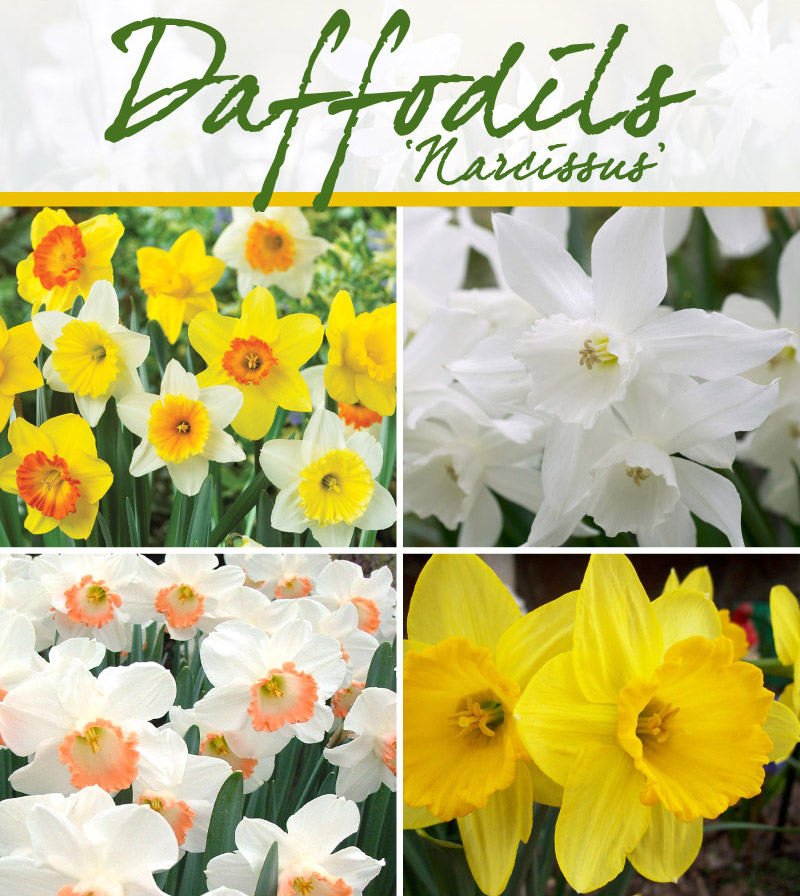These Tireless Performers Are Practically Synonymous With Spring

Bulb Of The Week: Daffodils
From the smallest to the tallest, Daffodils are an almost foolproof choice for your garden, landscape, or both! These tireless performers, some of which are delightfully fragrant, are practically synonymous with spring. They are equally at home in a garden bed that has been planned with precision, a container garden, or as part of a naturalized landscape.
It may surprise you to learn that Daffodils are native to the Iberian Peninsula, and developed in the late Oligocene to the early Miocene epochs. Wild forms now share the stage with hybrids that come in a range of colors and sizes.
The Narcissus genus, which includes Daffodils and Jonquils, was well-known by the ancients, who used the plants for medicinal purposes. Daffodils produce alkaloids, which make the plants and flowers poisonous and unpalatable to deer and other animals.
Many of us know Narcissus as the mythical Greek youth who fell in love with his own reflection — hence the term narcissistic. The genus was formally described by Linnaeus in 1753.
Miniature Daffodils, which grow six to eight inches high, include the sunny yellow Tete-a-Tete; Narcissus Triandrus Thalia, a fragrant white flower nicknamed “The Orchid Narcissus;” Jet Fire, a yellow flower with a striking orange cup; and Narcissus canaliculatus, a white blossom with a yellow cup. If you want to bring smaller plants into your garden, choose the Botanical Mixture, a collection of Miniature Daffodil bulbs.
Taller varieties include “Narcissus,” which features a peach-colored double flower; Pink Charm, a white flower with a pink cup; Blushing Lady, a peach variety with a deeper peach-colored cup; Double Fashion, a cream-colored double flower with a frilly orange cup; and Tahiti, a double yellow flower with an exotic orange and yellow center.
Bunch-flowering varieties include Narcissus Martinette, a yellow flower with an orange cup, and Yellow Cheerfulness, an heirloom which delights gardeners with its double yellow center and sweet fragrance.
Butterfly varieties of Daffodils including Orangery and Cassata feature a split corona/cup, which makes for an intriguing variety on the theme.
Gardeners who love the standard all-yellow Daffodils will love Dutch Master, which provides the well-loved yellow flowers with large cups. Dutch Master has replaced the once popular King Alfred as the most widely grown Daffodil in the world.
Those who love an all-white garden will gravitate toward Mount Hood and Misty Glen, and the previously mentioned Triandrus Thalia.
Not all Daffodils bloom at the same time, so you will be able to enjoy a show that will run for multiple weeks if you plan ahead. If you want all the planning done for you, try the Amsterdam collection, a mixture of yellow Daffodils that include small to large flowers that bloom in succession for three weeks.
When planting, choose a well-drained sunny site or partial shade. Large cup Daffodils originate from larger sized bulbs and should be planted approximately 8 inches deep where as the smaller botanical Daffodils originate from smaller bulbs and should only be planted 3-5 inches deep. A general rule of thumb is to plant bulbs 3 times as deep as the diameter of the bulb. Remember to plant the bulbs with the growing point facing up! Use a trowel or auger to make the job easier, and remember to stagger the bulbs when positioning them in the planting bed to produce a look of fullness when spring arrives.
Add Bulb-tone and amend your soil with Bumper Crop. These two organic products will do your bulbs a world of good. Water your bulbs well after planting. Adding a layer of mulch will also be beneficial and prevent the bulb from heaving during the frost-thaw cycle in the ground.
Now is an excellent time to plant Daffodil bulbs because they will begin rooting into the soil immediately and establishing themselves for next spring. You can plant Daffodil bulbs right up until the ground freezes if you do not have the time to plant now.
Remember to top-dress your plants with fertilizer in the spring to help fortify the bulbs for the next season.
After your Daffodils bloom, the strap-shaped basal leaves will turn brown and the nutrients that were produced by the leaves and stems will be stored in the bulb. DO NOT cut the foliage at this time. Your bulbs need the opportunity to pull these nutrients into reserve so they will be ready to produce flowers the following spring.
If you find the browning foliage unsightly, use companion plantings such as ornamental grasses and other perennials that emerge just as the Daffodils are returning to the earth. You’ll never notice the fading leaves!
Daffodils have a place in every garden, and will produce year after year. Visit us today and choose from a vast selection of premium Daffodil bulbs and enjoy a more colorful spring.

